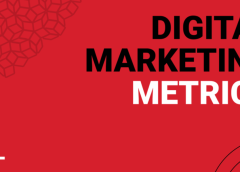Title: In the rapidly evolving landscape of marketing, digital marketing has emerged as the cornerstone of success for businesses across industries. With the widespread adoption of digital platforms and technologies, companies are increasingly shifting their focus from traditional offline marketing methods to online strategies. But what exactly makes online marketing the preferred choice over offline methods? How can companies effectively measure the success of their social media marketing efforts? And what key performance indicators (KPIs) should they prioritize in their social media reporting? Let’s delve into these questions to uncover the secrets of maximizing digital marketing success.
Why Choose Online Marketing Over Offline Marketing?
Online marketing offers a plethora of advantages over traditional offline marketing channels. One of the primary reasons for its preference is the unparalleled reach and accessibility it provides. Through digital channels such as websites, social media, email, and search engines, businesses can connect with a global audience 24/7, transcending geographical boundaries and time zones. This accessibility ensures that marketing messages reach target audiences with precision and efficiency, resulting in higher engagement and conversion rates compared to offline methods.
Moreover, online marketing enables unparalleled targeting and personalization capabilities. Advanced analytics tools and data-driven insights empower marketers to segment audiences based on demographics, interests, behaviors, and more. This granular level of targeting allows for the delivery of highly relevant and personalized content to individual consumers, thereby enhancing engagement and driving conversions.
Additionally, online marketing offers unparalleled flexibility and scalability. Unlike traditional offline campaigns that often require significant upfront investments and long lead times, digital marketing campaigns can be launched quickly and adjusted in real-time based on performance metrics. This agility enables marketers to optimize campaigns on the fly, allocate resources efficiently, and maximize ROI.
Measuring Social Media Marketing Success: Key Metrics and Strategies
Social media marketing has become an indispensable component of digital marketing strategies for businesses of all sizes. However, measuring the success of social media efforts can be challenging without the right metrics and strategies in place. So, how should companies go about evaluating the effectiveness of their social media campaigns?
The key to measuring social media marketing success lies in setting clear, actionable goals aligned with overall business objectives. Whether it’s increasing brand awareness, driving website traffic, generating leads, or boosting sales, each goal should be specific, measurable, attainable, relevant, and time-bound (SMART).
Once goals are established, companies can leverage a variety of metrics to gauge the performance of their social media initiatives. Some essential metrics to consider include:
- Engagement Metrics: Likes, comments, shares, retweets, and mentions indicate audience engagement and interaction with social media content.
- Reach and Impressions: These metrics quantify the number of people who have seen a company’s social media posts, providing insights into brand visibility and exposure.
- Click-Through Rate (CTR): CTR measures the percentage of users who clicked on a link or call-to-action (CTA) within a social media post, indicating the effectiveness of content in driving traffic to a website or landing page.
- Conversion Rate: Conversion rate tracks the percentage of social media users who complete a desired action, such as making a purchase, signing up for a newsletter, or downloading a resource.
- Customer Acquisition Cost (CAC): CAC measures the cost of acquiring a new customer through social media marketing efforts, helping companies assess the efficiency of their investment.
By monitoring these metrics regularly and analyzing trends over time, companies can gain valuable insights into the performance of their social media campaigns and make data-driven decisions to optimize future efforts.
Key Performance Indicators (KPIs) in Social Media Reporting
In addition to tracking individual metrics, companies should also identify and prioritize key performance indicators (KPIs) that align with overarching business objectives and strategic priorities. While the specific KPIs may vary depending on the nature of the business and the goals of the social media campaign, some common KPIs to consider include:
- Return on Investment (ROI): ROI measures the financial return generated from social media marketing activities relative to the resources invested. It provides a holistic view of the effectiveness and profitability of social media campaigns.
- Social Media Share of Voice (SOV): SOV quantifies a company’s presence and influence in the social media landscape relative to competitors. By tracking SOV, companies can assess their market position and identify opportunities for growth.
- Customer Lifetime Value (CLV): CLV estimates the total revenue that a customer is expected to generate over the entire duration of their relationship with the company. By maximizing CLV through targeted social media initiatives, companies can increase long-term profitability and customer loyalty.
- Social Media Sentiment: Sentiment analysis evaluates the overall sentiment (positive, negative, or neutral) of social media conversations related to a company or its products/services. Monitoring sentiment allows companies to gauge brand perception and identify areas for improvement.
- Social Media Influence: Influence metrics measure the impact and authority of a company’s social media presence, including the number of followers, reach, engagement, and influencer partnerships. By enhancing social media influence, companies can expand their audience reach and credibility within their industry.
By focusing on these KPIs in their social media reporting efforts, companies can gain deeper insights into the effectiveness of their social media strategies and make informed decisions to drive business growth and success.
In today’s digital age, where consumers spend a significant portion of their time online, digital marketing has become the cornerstone of modern business success. Let’s delve deeper into why online marketing is preferred over offline methods, how companies can effectively measure social media marketing success, and the key performance indicators (KPIs) crucial for social media reporting.
Why Online Marketing Trumps Offline Marketing
Online marketing offers unparalleled reach and targeting capabilities that traditional offline marketing channels simply can’t match. With the advent of search engines, social media platforms, and targeted advertising tools, businesses can precisely target their desired audience based on demographics, interests, and behaviors. This level of precision ensures that marketing efforts are directed towards those most likely to convert, resulting in higher ROI and efficiency.
Moreover, online marketing provides real-time data and analytics, allowing marketers to track campaign performance, adjust strategies on the fly, and optimize for better results. Unlike traditional methods such as print ads or billboards, where measuring effectiveness is often challenging and time-consuming, digital marketing platforms provide instant feedback, enabling marketers to make data-driven decisions quickly.
Measuring Social Media Marketing Success
Social media marketing success isn’t solely determined by vanity metrics like likes and followers. Instead, companies should focus on measuring metrics that align with their business objectives. Engagement metrics such as likes, comments, shares, and retweets are essential for assessing brand awareness and audience interaction. However, to gauge deeper impact, metrics like website traffic, lead generation, conversion rates, and customer acquisition cost should also be considered.
Furthermore, tracking sentiment analysis and brand mentions can provide valuable insights into audience perception and sentiment towards your brand. By monitoring conversations and sentiment trends, businesses can identify areas for improvement and tailor their social media strategies accordingly.
Key Performance Indicators (KPIs) for Social Media Reporting
When it comes to social media reporting, selecting the right KPIs is paramount for evaluating performance and demonstrating ROI. Some essential KPIs include:
- Reach and Impressions: Measure the number of unique users exposed to your content and the total number of times your content is displayed.
- Engagement Rate: Calculate the percentage of your audience that interacts with your content through likes, comments, shares, or clicks.
- Conversion Rate: Track the percentage of users who complete a desired action, such as making a purchase or filling out a form, after engaging with your social media content.
- Click-Through Rate (CTR): Evaluate the effectiveness of your call-to-action (CTA) by measuring the percentage of users who click on links within your posts.
- Return on Investment (ROI): Determine the profitability of your social media efforts by comparing the revenue generated against the total cost of your campaigns.
By leveraging these KPIs, businesses can gain valuable insights into the effectiveness of their social media marketing efforts and make informed decisions to drive better results.
Conclusion
In the digital age, the success of marketing efforts hinges on the effective utilization of online channels and data-driven strategies. By embracing digital marketing methodologies, companies can harness the power of technology to reach and engage with their target audiences more effectively than ever before. By measuring the right metrics and prioritizing key performance indicators, businesses can optimize their digital marketing initiatives, drive meaningful results, and stay ahead of the competition in today’s dynamic marketplace.






Leave a Reply
You must be logged in to post a comment.